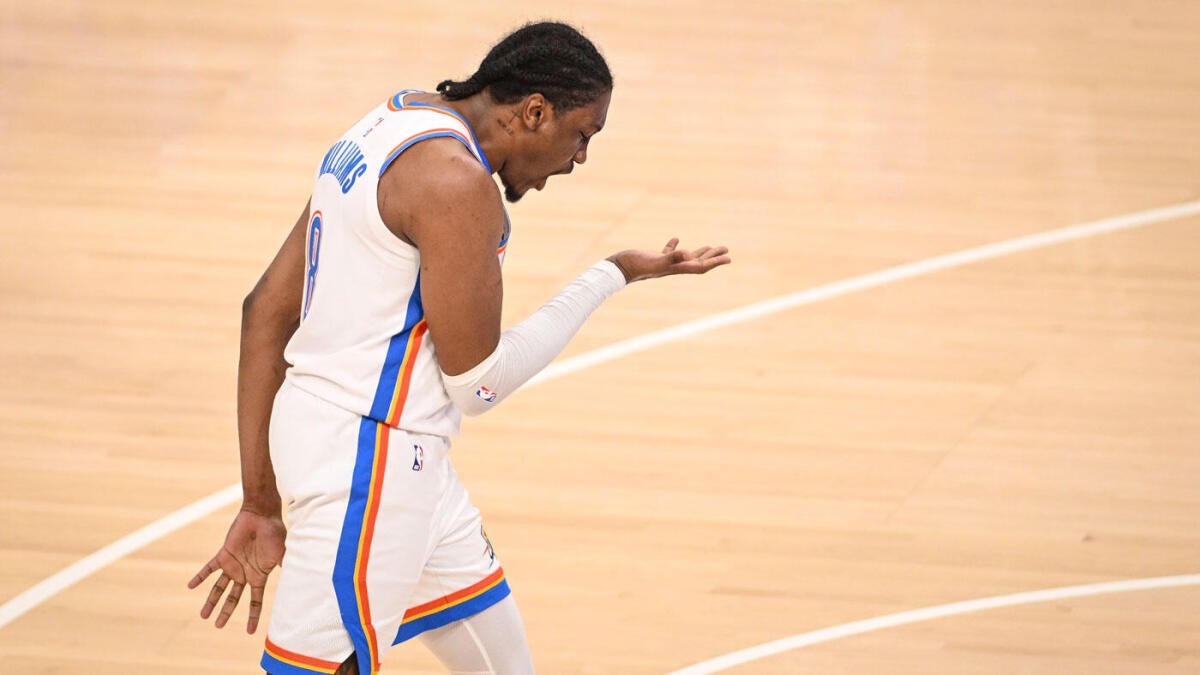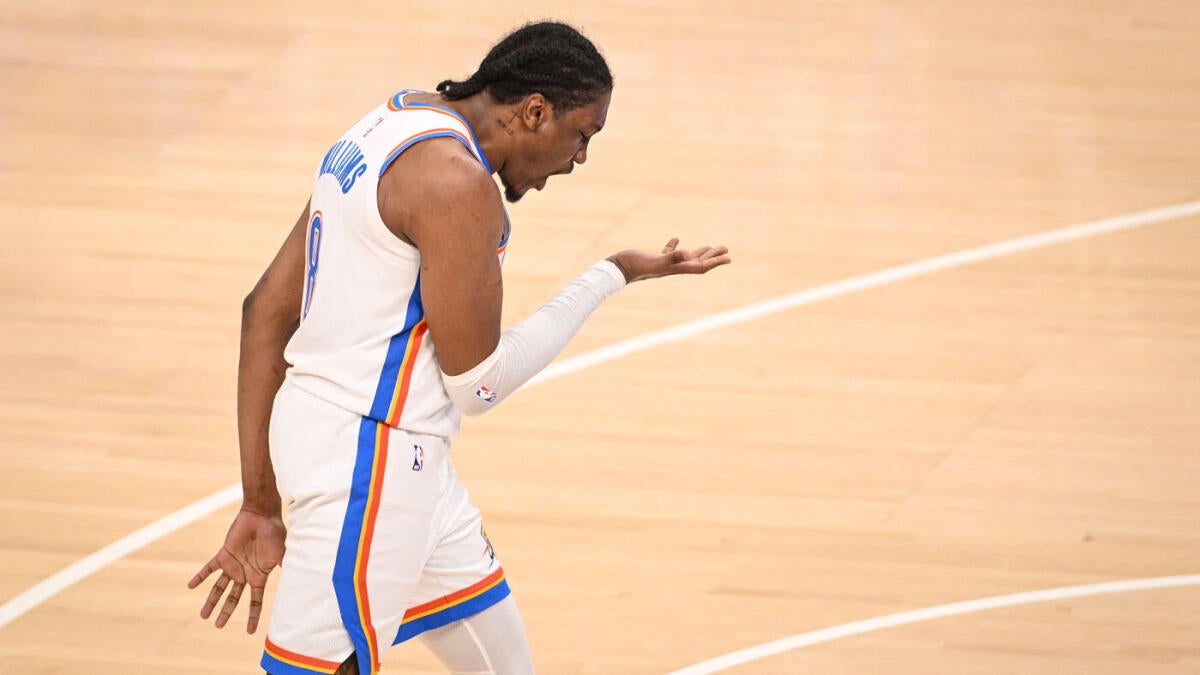Jalen Williams, the Oklahoma City Thunder’s rising star, recently underwent surgery to repair a torn ligament in his right wrist. This news, while concerning for Thunder fans, unveils a deeper narrative of resilience and dedication, a silent sacrifice made during the team’s triumphant championship run. Williams, a key player known for his versatility and clutch performances, played through significant pain, drawing inspiration from an unlikely source: the legendary Kobe Bryant. This report delves into the details of Williams’s injury, his decision to play through it, the impact on his performance, and what the future holds for the young All-Star.
The Injury and the Revelation
The injury, a torn ligament in his right wrist, was originally sustained in March during a game against the Phoenix Suns on April 9th. This would sideline many players, especially considering Williams’ dependence on his shooting hand. The full extent of the injury wasn’t publicly known until after the season concluded. What was known, however, was that Williams was receiving a series of shots, reportedly 28-29, in his hand and wrist throughout the postseason. This suggests a significant level of discomfort and the need for continuous pain management. The revelation that he played with a torn ligament adds a new layer of appreciation for his contribution to the Thunder’s championship victory.
The decision to play through such a severe injury is not uncommon in professional sports, but it is always met with a mix of admiration and concern. For Williams, the choice to continue playing was likely influenced by his commitment to his team and his desire to contribute to their championship run. The fact that he was able to maintain a high level of play despite the injury speaks volumes about his mental toughness and dedication to the game.
The Kobe Inspiration
One of the most compelling aspects of this story is Williams’s source of inspiration. He revealed that he drew strength and motivation from the late Kobe Bryant, a player renowned for his unwavering determination and willingness to play through injuries. Bryant’s “Mamba Mentality,” characterized by relentless pursuit of excellence and an unyielding commitment to the game, resonated deeply with Williams. By channeling this mindset, Williams found the mental fortitude to push through the pain and contribute to his team’s success. This connection to Bryant adds a poignant and inspiring dimension to Williams’s story, highlighting the enduring legacy of a basketball icon.
Kobe Bryant’s influence extends far beyond his playing career. His philosophy of relentless work ethic and mental toughness has inspired countless athletes, and Williams is just the latest example. The fact that Williams looked to Bryant for motivation during such a critical time in his career underscores the impact that Bryant had on the sport and its players. It also highlights the importance of having role models and mentors in professional sports, as they can provide guidance and inspiration during challenging times.
Impact on Performance
Playing with a torn ligament undoubtedly impacted Williams’s performance, even if subtly. While his overall statistics during the playoffs remained solid, it’s reasonable to assume that his shooting accuracy, ball-handling, and defensive capabilities were somewhat affected. Despite the injury, Williams averaged significant minutes, demonstrating his importance to the team’s overall strategy. His ability to adapt and find ways to contribute despite the pain speaks volumes about his basketball IQ and his commitment to the team. It’s a testament to his adaptability and determination. While statistics don’t always tell the full story, the fact that he maintained a high level of play while injured is remarkable.
The impact of the injury on Williams’s performance is a reminder of the physical toll that professional athletes endure. Despite the pain and discomfort, Williams was able to contribute to his team’s success, which is a testament to his skill and determination. However, it also raises questions about the long-term effects of playing through such injuries. The decision to play through pain is a complex one, and it is important for athletes to weigh the potential benefits against the risks of further damage.
The Surgery and Recovery
Following the championship celebrations, Williams underwent surgery to repair the torn ligament. The surgery, performed by Dr. Steven Shin at Cedars-Sinai Medical Center, was reportedly successful. The Thunder organization announced that Williams will be reevaluated in approximately 12 weeks. This timeline suggests that he is expected to make a full recovery and be ready for the start of the 2025-26 season. The successful surgery and the projected recovery timeline offer a sense of relief to Thunder fans, who eagerly anticipate his return to full strength.
The recovery process is a critical phase for any athlete, and it is important for Williams to take the necessary time to heal and rehabilitate. The 12-week timeline provides a reasonable window for recovery, but it is also important to note that every athlete’s recovery process is unique. Williams will need to work closely with his medical team and training staff to ensure that he is fully prepared for the upcoming season. The support of his teammates and the organization will also play a crucial role in his recovery.
The Broader Implications
Williams’s decision to play through his injury raises broader questions about the pressures athletes face to perform, especially during high-stakes situations like the playoffs. While his dedication is admirable, it also highlights the potential risks of playing through pain. Teams and players must carefully weigh the potential benefits of playing through an injury against the risk of further damage and long-term consequences. The balance between competitive drive and player welfare is a delicate one, and Williams’s situation underscores the importance of making informed decisions with the player’s best interests at heart.
The broader implications of Williams’s decision to play through his injury are significant. It highlights the need for better support systems for athletes, including access to medical professionals and mental health resources. It also underscores the importance of open communication between players, coaches, and medical staff to ensure that decisions about playing through injuries are made with the player’s long-term health in mind.
The Future for Jalen Williams and the Thunder
Looking ahead, Jalen Williams remains a cornerstone of the Oklahoma City Thunder’s future. His versatility, scoring ability, and defensive prowess make him an invaluable asset. With the core of the team remaining intact, and with Williams expected to return healthy, the Thunder are poised to contend for championships for years to come. His experience playing through adversity will undoubtedly make him an even stronger and more resilient player. The Thunder’s investment in Williams has clearly paid off, and his future in Oklahoma City looks incredibly bright.
The future looks promising for both Williams and the Thunder. Williams’s ability to overcome adversity and contribute to his team’s success is a testament to his character and dedication. The Thunder’s commitment to building a strong and competitive team is evident, and Williams’s role in that success is undeniable. As he continues to develop and grow as a player, he will undoubtedly become an even more valuable asset to the team.
A Testament to Tenacity
Jalen Williams’s story is more than just an injury report; it’s a testament to tenacity, dedication, and the enduring power of inspiration. His decision to play through a torn ligament, drawing strength from Kobe Bryant’s example, exemplifies the spirit of a true champion. While the physical pain may have been significant, his mental fortitude and unwavering commitment to his team propelled him forward. As he recovers from surgery, Williams can take pride in knowing that his sacrifice contributed to the Thunder’s championship victory. His story will undoubtedly inspire young athletes for years to come, reminding them that true strength lies not only in physical ability but also in the unwavering determination to overcome adversity.












